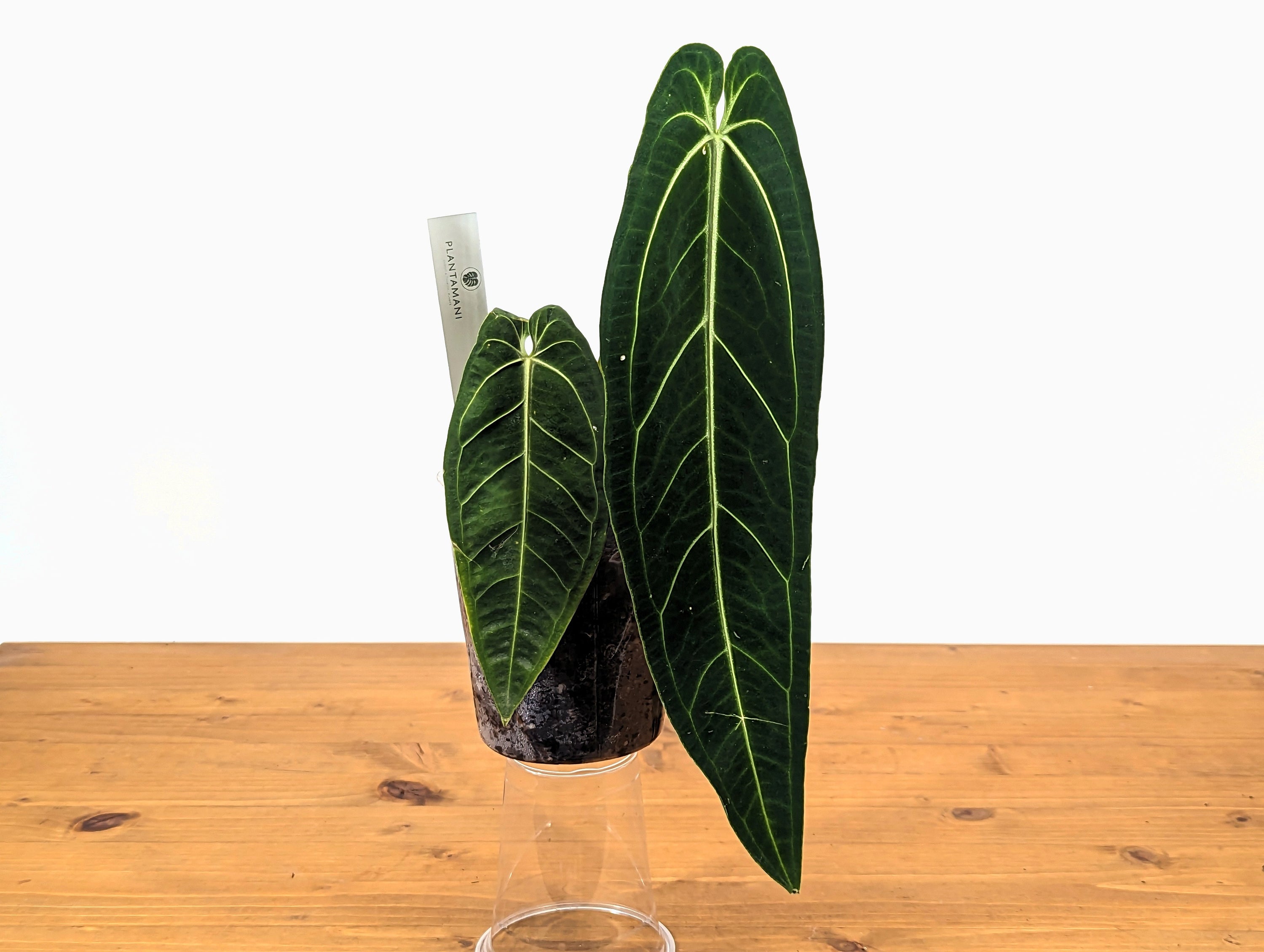So, you’ve welcomed the regal Anthurium warocqueanum into your home—the velvet-leafed sovereign of the plant world. She’s breathtaking, yes, but also famously particular. Fear not. With a little understanding (and a lot of humidity), you’ll learn to speak her language.

Light: Her Majesty’s Preferred Spotlight
Imagine the dappled sunlight of a Colombian rainforest canopy—that’s what your Queen craves. Bright, indirect light is her sweet spot, where she’ll unfurl those jaw-dropping leaves with theatrical flourish. A north or east-facing window draped with a sheer curtain is her throne. Too much direct sun? She’ll scorch like a Victorian lady without her parasol. Too dim? She’ll grow sluggish, her leaves shrinking in protest. If you notice her stretching toward the light like a subject reaching for a monarch’s favor, it’s time to move her closer to the window.
Watering: The Art of the Perfect Sip
Here’s the thing about the Queen: she likes her soil to feel like a wrung-out sponge—lightly moist, never soggy. Wait until the top inch or two of soil has dried out before offering her a drink, and when you do, drench the soil until water runs freely from the drainage holes. Then, let it all drain away. She abhors "wet feet" more than a cat avoids a bath. Never let the soil dry completely, as it may be difficult to properly hydrate if the potting medium becomes hydrophobic. If this happens, bottom water her pot to help evenly wet the soil.
Water quality matters, too. Tap water’s minerals can leave her leaf tips crispy and brown, as if she’s been slighted. Rainwater or distilled water is her preferred champagne. And in winter, when growth slows, she’ll take fewer, more modest sips—overwatering then is the fastest way to provoke a royal meltdown (read: root rot).

Humidity & Warmth: Recreating the Royal Court
If there’s one non-negotiable for the Queen, it’s humidity—think steamy jungle mornings, not dry desert afternoons. She demands 80% or higher to keep those velvety leaves pristine. Anything less, and she’ll protest with brown, crumpled edges, like a lace handkerchief tossed in frustration. A humidifier is her loyal attendant; pebble trays are mere jesters in comparison.
Temperature is equally critical. She thrives in warmth—75–85°F (24–30°C) is her comfort zone. Dip below 65°F (18°C), and she’ll shiver, her leaves drooping like a courtier banished to the cold. Drafts? Unforgivable. Keep her far from air vents and chilly windows, lest she stage a dramatic leaf-drop rebellion.
Soil & Potting: The Royal Foundation
The Queen’s roots are as delicate as her reputation. They demand an airy, chunky mix—picture orchid bark, sphagnum moss, and perlite conspiring to create the perfect, breathable bed. Heavy, dense soil is her sworn enemy, suffocating roots like a too-tight corset.
Repotting should be a rare and careful ceremony, performed only when her roots begin to escape their confines. Choose a pot just slightly larger—a sudden palace expansion might overwhelm her. And always, always ensure proper drainage. Terracotta may wick away too much moisture; glazed ceramic or plastic, with their gentle humidity retention, are more her style.
Fertilizing: The Royal Banquet
Feed her, but with restraint. During the growing season (spring and summer), a diluted, balanced fertilizer every few weeks is like serving her a dainty tea sandwich—enough to nourish, never enough to overwhelm. Overfeeding leads to salt buildup, which she’ll punish with burnt leaf tips. A monthly flush of the soil keeps her roots as pristine as her reputation.
Include CalMag+ in your supplementation routine for this beauty. A supplement now and then strengthens those magnificent leaves, ensuring they grow broad and unblemished.

Pruning & Support: The Queen’s Grooming Ritual
Her leaves are her crown jewels—handle with care. Trim away only the yellowed or damaged ones, cutting close to the base with sterilized scissors. And never, ever cut her aerial roots. These gnarled, adventurous strands are her lifelines, reaching out for moisture and stability like royal decrees.
As she grows, she’ll need support—a moss pole is her scepter, guiding her upward. Without it, those heavy, magnificent leaves may droop like a weary monarch. Tie her stems gently, with soft plant tape, as if fastening the ribbons of a royal gown.
When Trouble Arises: A Royal Decree for Common Woes
-
Crispy leaf edges? The air is too dry. A humidifier is your only hope.
-
Yellow leaves? Overwatering is the likely villain. Let her soil breathe.
-
A new leaf stuck mid-unfurl? Up the humidity and whisper encouragement.
-
Pests daring to invade? Quarantine immediately. Neem oil is your sword.
Final Proclamations
-
No leaf shine. Her velvet is natural—tampering is treason.
-
Patience is key. She grows slowly, like a kingdom being built.
-
Flowers are rare. But let’s be honest—you’re here for the leaves.
